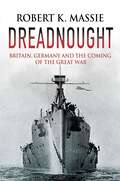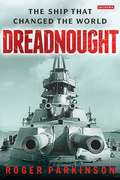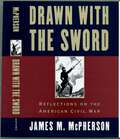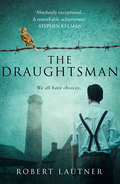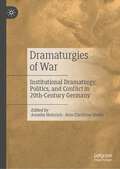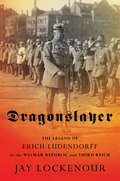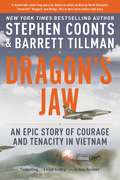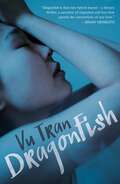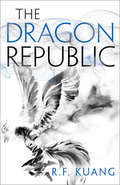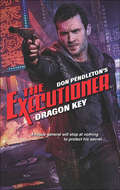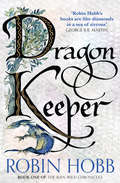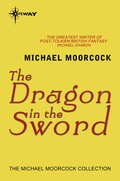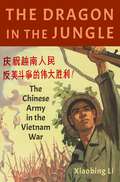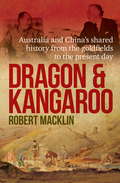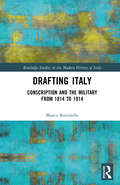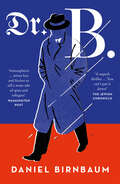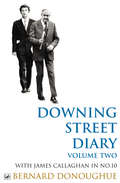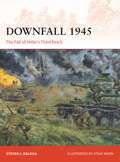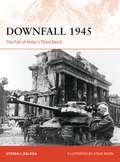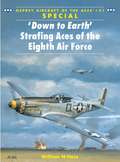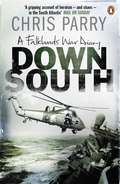- Table View
- List View
Dreadnought: Britain, Germany and the Coming of the Great War
by Robert K. MassieFrom colonial disputes, secret treaties with former foes, high-wire diplomacy, and tit-for-tat building of the terrifyingly powerful dreadnought battleships. DREADNOUGHT is a dramatic re-creation of the diplomatic and military brinkmanship that preceded, and made inevitable, the outbreak of the first world war.Massie brings to vivid life such historical figures as the single-minded Admiral von Tirpitz, the young, ambitious, Winston Churchill, the ruthless, sycophantic Chancellor Bernhard von Bulow, and many others. The relationship between Queen Victoria and Kaiser Wilhelm is particularly intriguing. Wilhelm's admiration, and even envy, for everything British, was to play an important part in the events to come. Their story, and the story of the era, filled with misunderstandings, missed opportunities, and events leading to unintended conclusions, unfolds like a Greek tragedy in his powerful narrative. Intimately human and dramatic, DREADNOUGHT is history at its most riveting.
Dreadnought: The Ship that Changed the World
by Roger ParkinsonThe years before World War I were the 'Age of the Dreadnought'. The monumental battleship design, first introduced by Admiral Fisher to the Royal Navy in 1906, was quickly adopted around the world and led to a new era of maritime warfare. In this book, Roger Parkinson provides a re-writing of the naval history of Britain and the other leading naval powers - Germany, America and Japan - from the 1880s to the early years of World War I. He shows how the dreadnought enabled the Royal Navy to develop from being primarily the navy of the 'Pax Britannica' in the Victorian era to being a war-ready fighting force in the early years of the twentieth century. The ensuing era of intensifying naval competition rapidly became a full-blooded naval arms race, leading to the development of super-dreadnoughts and escalating tensions between the European powers. Providing a truly international perspective on the dreadnought phenomenon, this book will be essential reading for all naval history enthusiasts and anyone interested in World War I.
Drawn with the Sword: Reflections on the American Civil War
by James M. McPhersonJames M. McPherson is acclaimed as one of the finest historians writing today and a preeminent commentator on the Civil War. Battle Cry of Freedom, his Pulitzer Prize-winning account of that conflict, was a national bestseller that Hugh Brogan, in The New York Times, called "history writing of the highest order." Now, in Drawn With the Sword, McPherson offers a series of thoughtful and engaging essays on some of the most enduring questions of the Civil War, written in the masterful prose that has become his trademark. Filled with fresh interpretations, puncturing old myths and challenging new ones, Drawn With the Sword explores such questions as why the North won and why the South lost (emphasizing the role of contingency in the Northern victory), whether Southern or Northern aggression began the war, and who really freed the slaves, Abraham Lincoln or the slaves themselves. McPherson offers memorable portraits of the great leaders who people the landscape of the Civil War: Ulysses S. Grant, struggling to write his memoirs with the same courage and determination that marked his successes on the battlefield; Robert E. Lee, a brilliant general and a true gentleman, yet still a product of his time and place; and Abraham Lincoln, the leader and orator whose mythical figure still looms large over our cultural landscape. And McPherson discusses often-ignored issues such as the development of the Civil War into a modern "total war" against both soldiers and civilians, and the international impact of the American Civil War in advancing the cause of republicanism and democracy in countries from Brazil and Cuba to France and England. Of special interest is the final essay, entitled "What's the Matter With History?", a trenchant critique of the field of history today, which McPherson describes here as "more and more about less and less." He writes that professional historians have abandoned narrative history written for the greater audience of educated general readers in favor of impenetrable tomes on minor historical details which serve only to edify other academics, thus leaving the historical education of the general public to films and television programs such as Glory and Ken Burns's PBS documentary The Civil War. Each essay in Drawn With the Sword reveals McPherson's own profound knowledge of the Civil War and of the controversies among historians, presenting all sides in clear and lucid prose and concluding with his own measured and eloquent opinions. Readers will rejoice that McPherson has once again proven by example that history can be both accurate and interesting, informative and well-written. Mark Twain wrote that the Civil War "wrought so profoundly upon the entire national character that the influence cannot be measured short of two or three generations." In Drawn With the Sword, McPherson gracefully and brilliantly illuminates this momentous conflict.
Drawn with the Sword: Reflections on the American Civil War
by James M. McPhersonJames M. McPherson is acclaimed as one of the finest historians writing today and a preeminent commentator on the Civil War. Battle Cry of Freedom, his Pulitzer Prize-winning account of that conflict, was a national bestseller that Hugh Brogan, in The New York Times, called "history writing of the highest order." Now, in Drawn With the Sword, McPherson offers a series of thoughtful and engaging essays on some of the most enduring questions of the Civil War, written in the masterful prose that has become his trademark. Filled with fresh interpretations, puncturing old myths and challenging new ones, Drawn With the Sword explores such questions as why the North won and why the South lost (emphasizing the role of contingency in the Northern victory), whether Southern or Northern aggression began the war, and who really freed the slaves, Abraham Lincoln or the slaves themselves. McPherson offers memorable portraits of the great leaders who people the landscape of the Civil War: Ulysses S. Grant, struggling to write his memoirs with the same courage and determination that marked his successes on the battlefield; Robert E. Lee, a brilliant general and a true gentleman, yet still a product of his time and place; and Abraham Lincoln, the leader and orator whose mythical figure still looms large over our cultural landscape. And McPherson discusses often-ignored issues such as the development of the Civil War into a modern "total war" against both soldiers and civilians, and the international impact of the American Civil War in advancing the cause of republicanism and democracy in countries from Brazil and Cuba to France and England. Of special interest is the final essay, entitled "What's the Matter With History?", a trenchant critique of the field of history today, which McPherson describes here as "more and more about less and less." He writes that professional historians have abandoned narrative history written for the greater audience of educated general readers in favor of impenetrable tomes on minor historical details which serve only to edify other academics, thus leaving the historical education of the general public to films and television programs such as Glory and Ken Burns's PBS documentary The Civil War. Each essay in Drawn With the Sword reveals McPherson's own profound knowledge of the Civil War and of the controversies among historians, presenting all sides in clear and lucid prose and concluding with his own measured and eloquent opinions. Readers will rejoice that McPherson has once again proven by example that history can be both accurate and interesting, informative and well-written. Mark Twain wrote that the Civil War "wrought so profoundly upon the entire national character that the influence cannot be measured short of two or three generations." In Drawn With the Sword, McPherson gracefully and brilliantly illuminates this momentous conflict.
The Draughtsman
by Robert LautnerSpeak out for the fate of millions or turn a blind eye? We all have choices. ‘Absolutely exceptional. So beautifully written, with precision and wisdom and real emotional acuity … A remarkable achievement’ STEPHEN KELMAN, author of Pigeon English
Dramaturgies of War: Institutional Dramaturgy, Politics, and Conflict in 20th-Century Germany
by Anselm Heinrich Ann-Christine SimkeThis book examines the institutional contexts of dramaturgical practices in the changing political landscape of 20th century Germany. Through wide-ranging case studies, it discusses the way in which operationalised modes of action, legal frameworks and an established profession have shaped dramaturgical practice and thus links to current debates around the “institutional turn” in theatre and performance studies. German theatre represents a rich and well-chosen field as it is here where the role of the dramaturg was first created and where dramaturgy played a significantly politicised role in the changing political systems of the 20th century. The volume represents an important addition to a growing field of work on dramaturgy by contributing to a historical contextualisation of current practice. In doing so, it understands dramaturgy not only as a process which occurs in rehearsal rooms and writers’ studies, but one that has far wider institutional and political implications.
Dragonslayer: The Legend of Erich Ludendorff in the Weimar Republic and Third Reich (Battlegrounds: Cornell Studies in Military History)
by Jay LockenourIn this fascinating biography of the infamous ideologue Erich Ludendorff, Jay Lockenour complicates the classic depiction of this German World War I hero. Erich Ludendorff created for himself a persona that secured his place as one of the most prominent (and despicable) Germans of the twentieth century. With boundless energy and an obsession with detail, Ludendorff ascended to power and solidified a stable, public position among Germany's most influential. Between 1914 and his death in 1937, he was a war hero, a dictator, a right-wing activist, a failed putschist, a presidential candidate, a publisher, and a would-be prophet. He guided Germany's effort in the Great War between 1916 and 1918 and, importantly, set the tone for a politics of victimhood and revenge in the postwar era. Dragonslayer explores Ludendorff's life after 1918, arguing that the strange or unhinged personal traits most historians attribute to mental collapse were, in fact, integral to Ludendorff's political strategy. Lockenour asserts that Ludendorff patterned himself, sometimes consciously and sometimes unconsciously, on the dragonslayer of Germanic mythology, Siegfried—hero of the epic poem The Niebelungenlied and much admired by German nationalists. The symbolic power of this myth allowed Ludendorff to embody many Germans' fantasies of revenge after their defeat in 1918, keeping him relevant to political discourse despite his failure to hold high office or cultivate a mass following after World War I.Lockenour reveals the influence that Ludendorff's postwar career had on Germany's political culture and radical right during this tumultuous era. Dragonslayer is a tale as fabulist as fiction.
Dragon's Jaw: An Epic Story of Courage and Tenacity in Vietnam
by Stephen Coonts Barrett TillmanA riveting Vietnam War story--and one of the most dramatic in aviation history--told by a New York Times bestselling author and a prominent aviation historianEvery war has its "bridge"--Old North Bridge at Concord, Burnside's Bridge at Antietam, the railway bridge over Burma's River Kwai, the bridge over Germany's Rhine River at Remagen, and the bridges over Korea's Toko Ri. In Vietnam it was the bridge at Thanh Hoa, called Dragon's Jaw.For seven long years hundreds of young US airmen flew sortie after sortie against North Vietnam's formidable and strategically important bridge, dodging a heavy concentration of anti-aircraft fire and enemy MiG planes. Many American airmen were shot down, killed, or captured and taken to the infamous "Hanoi Hilton" POW camp. But after each air attack, when the smoke cleared and the debris settled, the bridge stubbornly remained standing. For the North Vietnamese it became a symbol of their invincibility; for US war planners an obsession; for US airmen a testament to American mettle and valor.Using after-action reports, official records, and interviews with surviving pilots, as well as untapped Vietnamese sources, Dragon's Jaw chronicles American efforts to destroy the bridge, strike by bloody strike, putting readers into the cockpits, under fire. The story of the Dragon's Jaw is a story rich in bravery, courage, audacity, and sometimes luck, sometimes tragedy. The "bridge" story of Vietnam is an epic tale of war against a determined foe.
Dragonfish: An international literary thriller
by Vu Tran'That rare hybrid marvel – a literary thriller, a narrative of migration and loss that upends the conventions of any form' – Dinaw Mengestu, author of All Our Names,New York Times Notable Book 2015Robert, an Oakland cop, still can’t let go of Suzy, the enigmatic Vietnamese wife who left him two years ago. Now she’s disappeared from her new husband, Sonny, a violent Vietnamese smuggler and gambler who is blackmailing Robert into finding her for him. As he pursues her through the sleek and seamy gambling dens of Las Vegas, shadowed by Sonny’s sadistic son, ‘Junior’, and assisted by unexpected and reluctant allies, Robert learns more about his ex-wife than he ever did during their marriage. He finds himself chasing the ghosts of her past, one that reaches back to a refugee camp in Malaysia after the fall of Saigon, and his investigation uncovers the existence of an elusive packet of her secret letters to someone she left behind long ago. As Robert starts illuminating the dark corners of Suzy’s life, the legacy of her sins threatens to immolate them all. Vu Tran has written a thrilling and cinematic work of sophisticated suspense and haunting lyricism set in motion by characters who can neither trust each other nor trust themselves. This remarkable debut is a noir page-turner resonant with the lasting reverberations of lives lost and lives remade a generation ago.'Splendidly crafted and thrillingly told, the narrative is driven by the fundamental quest at the heart of much great literature: the quest for a self, for an identity. Vu Tran is an exciting new literary voice' — Robert Olen Butler, Pulitzer Prize winner
The Dragon Republic (The Poppy War #2)
by R.F. KuangThe searing follow-up to 2018’s most celebrated fantasy debut – THE POPPY WAR.
Dragon Keeper: Volume One Of The Rain Wilds Chronicles (The Rain Wild Chronicles #1)
by Robin Hobb‘Fantasy as it ought to be written’ George R.R. Martin Return to the world of the Liveships Traders and journey along the Rain Wild River in this fantastic adventure from the author of the internationally acclaimed Farseer trilogy.
The Dragon in the Sword: Book 3 Of Erekosë Trilogy (The\eternal Champion Ser.)
by Michael MoorcockThe third book of The Eternal Champion trilogy.John Daker is the Eternal Champion, trapped in a dimensionless plane outside of time, defender and destroyer of justice, a hero whose quest for justice leads only further into darkness. Haunted by the memories of too many battles waged during countless lifetimes, he searches for the beautiful Ermizhad - and for the key that will allow him to step off the wheel of infinite incarnations. His is a voyage on a dark ship piloted by a blind helmsman, through the slave stalls of the Cannibal Ghost Women and the tunnels of doom to a monstrous confrontation with the Evil that could plunge the world into the final night of oblivion.
The Dragon in the Jungle: The Chinese Army in the Vietnam War
by Xiaobing LiWestern historians have long speculated about Chinese military intervention in the Vietnam War. It was not until recently, however, that newly available international archival materials, as well as documents from China, have indicated the true extent and level of Chinese participation in the conflict of Vietnam. For the first time in the English language, this book offers an overview of the operations and combat experience of more than 430,000 Chinese troops in Indochina from 1968-73. The Chinese Communist story from the "other side of the hill" explores one of the missing pieces to the historiography of the Vietnam War. The book covers the chronological development and Chinese decision-making by examining Beijing's intentions, security concerns, and major reasons for entering Vietnam to fight against the U.S. armed forces. It explains why China launched a nationwide movement, in Mao Zedong's words, to "assist Vietnam and resist America" in 1965-72. It details PLA foreign war preparation, training, battle planning and execution, tactical decisions, combat problem solving, political indoctrination, and performance evaluations through the Vietnam War. International Communist forces, technology, and logistics proved to be the decisive edge that enabled North Vietnam to survive the U.S. Rolling Thunder bombing campaign and helped the Viet Cong defeat South Vietnam. Chinese and Russian support prolonged the war, making it impossible for the United States to win. With Russian technology and massive Chinese intervention, the NVA and NLF could function on both conventional and unconventional levels, which the American military was not fully prepared to face. Nevertheless, the Vietnam War seriously tested the limits of the communist alliance. Rather than improving Sino-Soviet relations, aid to North Vietnam created a new competition as each communist power attempted to control Southeast Asian communist movement. China shifted its defense and national security concerns from the U.S. to the Soviet Union.
The Dragon in the Jungle: The Chinese Army in the Vietnam War
by Xiaobing LiWestern historians have long speculated about Chinese military intervention in the Vietnam War. It was not until recently, however, that newly available international archival materials, as well as documents from China, have indicated the true extent and level of Chinese participation in the conflict of Vietnam. For the first time in the English language, this book offers an overview of the operations and combat experience of more than 430,000 Chinese troops in Indochina from 1968-73. The Chinese Communist story from the "other side of the hill" explores one of the missing pieces to the historiography of the Vietnam War. The book covers the chronological development and Chinese decision-making by examining Beijing's intentions, security concerns, and major reasons for entering Vietnam to fight against the U.S. armed forces. It explains why China launched a nationwide movement, in Mao Zedong's words, to "assist Vietnam and resist America" in 1965-72. It details PLA foreign war preparation, training, battle planning and execution, tactical decisions, combat problem solving, political indoctrination, and performance evaluations through the Vietnam War. International Communist forces, technology, and logistics proved to be the decisive edge that enabled North Vietnam to survive the U.S. Rolling Thunder bombing campaign and helped the Viet Cong defeat South Vietnam. Chinese and Russian support prolonged the war, making it impossible for the United States to win. With Russian technology and massive Chinese intervention, the NVA and NLF could function on both conventional and unconventional levels, which the American military was not fully prepared to face. Nevertheless, the Vietnam War seriously tested the limits of the communist alliance. Rather than improving Sino-Soviet relations, aid to North Vietnam created a new competition as each communist power attempted to control Southeast Asian communist movement. China shifted its defense and national security concerns from the U.S. to the Soviet Union.
Dragon and Kangaroo: Australia and China’s Shared History from the Goldfields to the Present Day
by Robert MacklinThe fascinating story of the Chinese presence in and influence on this country - our intertwined history from colonial times to today.Chinese 'presence' in Australia extends from well before the time of Captain Cook - trading with northern Australia long before Europeans came here - right through to the present day, with Chinese activities ranging from being the main customer for our iron ore, to their very extensive intelligence operations here. Robert Macklin, bestselling and critically acclaimed author of HAMILTON HUME and DARK PARADISE, has traced a new history of the two nations. Macklin's engrossing narrative reaches from pre-colonial times, to John Macarthur's 'coolie' shepherds, the only Chinese bushranger, Sam Pu, and the multiple atrocities committed against the Chinese in the gold rush; through to the 20th century, where the two Australians - 'Morrison of Peking' and William Donald - played a significant role in the downfall of the last Chinese emperor and the creation of the first republic, before World War II and decades of Cold War brinkmanship; to our current economic bonds and Australia's role in the dangerous geopolitics of the South China Sea. DRAGON AND KANGAROO is an absorbing account of a vastly underestimated part of Australia's story: this is our shared history, from an immensely important - and entirely new - angle. 'Robert Macklin calls Hamilton Hume "our greatest explorer", and now that I've read this enthralling but at times shocking story, I totally agree.' ***** GOOD READING on Robert Macklin's HAMILTON HUME
Drafting Italy: Conscription and the Military from 1814 to 1914 (Routledge Studies in the Modern History of Italy)
by Marco RovinelloThis is the first comprehensive history of conscription and the military in Italy from the Restoration to the eve of WWI. The comparative and transnational approach enables this work to compare and contrast the Italian experience with that of many other countries in the world as well as understand transfers and the adaptive and imitative processes that emerge when conscription and the military are viewed from an Italian perspective. Peacetime and wartime recruitment, military life, culture, justice and civil-military relationships are analysed using a wide range of sources and an interdisciplinary approach that combines top-down and bottom-up perspectives. This enables the book not only to assess the contribution the military has made to the country in terms of state-building, nation building, modernization, pedagogical and disciplinary models, gender identity and roles, but also to reconsider the standard taxonomies as well as some established evolutionary models of the armies. Moreover, the Italian military is seen as an internally complex world that is incapable of defining its own one-dimensional identity or of imposing any such identity on its members. Consequently, it is an element in the history of a country that is substantially the same as any other such element and thus important in people’s collective and individual lives whether or not they are in uniform. Rather than being an object of study in and of itself, the military becomes a vantage point from which to observe the Italian history in the long 19th century. Therefore, this book can be profitably read by professional military historians and non-specialist readers interested in the military, as well as by all scholars working on Italian pre- and post-unification political, institutional, socio-economic, cultural and gender history.
Drafting Italy: Conscription and the Military from 1814 to 1914 (Routledge Studies in the Modern History of Italy)
by Marco RovinelloThis is the first comprehensive history of conscription and the military in Italy from the Restoration to the eve of WWI. The comparative and transnational approach enables this work to compare and contrast the Italian experience with that of many other countries in the world as well as understand transfers and the adaptive and imitative processes that emerge when conscription and the military are viewed from an Italian perspective. Peacetime and wartime recruitment, military life, culture, justice and civil-military relationships are analysed using a wide range of sources and an interdisciplinary approach that combines top-down and bottom-up perspectives. This enables the book not only to assess the contribution the military has made to the country in terms of state-building, nation building, modernization, pedagogical and disciplinary models, gender identity and roles, but also to reconsider the standard taxonomies as well as some established evolutionary models of the armies. Moreover, the Italian military is seen as an internally complex world that is incapable of defining its own one-dimensional identity or of imposing any such identity on its members. Consequently, it is an element in the history of a country that is substantially the same as any other such element and thus important in people’s collective and individual lives whether or not they are in uniform. Rather than being an object of study in and of itself, the military becomes a vantage point from which to observe the Italian history in the long 19th century. Therefore, this book can be profitably read by professional military historians and non-specialist readers interested in the military, as well as by all scholars working on Italian pre- and post-unification political, institutional, socio-economic, cultural and gender history.
Dr. B.
by Daniel BirnbaumThe former director of the Museum of Modern Art in Stockholm makes his literary debut with this dramatic and riveting novel of book publishing, émigrés, spies, and diplomats in World War II Sweden based on his grandfather’s life
Downing Street Diary Volume Two: With James Callaghan in No. 10
by Bernard DonoughueThe first volume of Bernard Donoughue's Downing Street Diary was described by Charles Moore in the Daily Telegraph as 'the best account of Harold Wlson's last days'; 'the sheer scale and detail are fascinating' wrote Peter Riddell in the Times Literary Supplement. This second volume covers the three years, 1976-79, when Donoughue was Senior Policy Advisor to James Callaghan.At first Callaghan quickly established dominance over his cabinet and restored calm after the plots and scandals of the later Wilson years. His incomes policy reduced inflation and, in the teeth of opposition from the left wing, he negotiated the notorious IMF loan at the expense of eliminating some of Labour's most cherished dreams. By 1978, Callaghan, a politician of great patriotism and decency, seemed to have succeeded in steering Britain into calmer waters. But then the storm broke. Trade union militants brushed aside their mediocre leaders and launched a ferocious attack on Callaghan's pay policy, driving up inflation and demonstrating the government's impotence. In the diaries we see the prime minister and the government paralysed as the 'Winter of Discontent' began to bite and politics took to the streets.As Labour drifted to inevitable defeat in the 1979 election we see Callaghan fighting honourably. From the smoke of battle there emerges a striking new leader: Margaret Thatcher. The diaries describe vividly both the decline and final collapse of 'old' Labour and how Mrs Thatcher took the opportunity to launch her crusade to dismantle trade union power and much of the British public sector.Besides James Callaghan the chief figures in this volume of Lord Donoughue's diaries are Roy Jenkins, Denis Healey, Tony Crosland, Michael Foot, Shirley Williams, David Owen and Tony Benn.
Downfall 1945: The Fall of Hitler’s Third Reich (Campaign #293)
by Steven J. ZalogaAs the final month of fighting in Europe in 1945 dawned the Allies embarked upon a series of mopping up operations, destroying the last centres of German resistance as the essentially defeated Wehrmacht fought on in increasingly desperate conditions, driven on by the explicit no surrender order issued by Hitler.Yet at the same time, the Allied alliance was already on shaky ground, as German resistance was crushed the Allies began to eye each other nervously across a battletorn Europe, with the politically driven military decisions to have a huge impact on the future of the continent. This book traces the final operations of the war, from the liberation of Denmark, the Allied drive towards the Baltic straits, incursions in Yugoslavia, Hungary, Czechoslovakia and engagements in Eastern and Western Germany, whilst also analyzing how the Allied strategies in the final days of the war were a hint of the future difficulties that would drive the Cold War.
Downfall 1945: The Fall of Hitler’s Third Reich (Campaign #293)
by Steven J. Zaloga Steve NoonAs the final month of fighting in Europe in 1945 dawned the Allies embarked upon a series of mopping up operations, destroying the last centres of German resistance as the essentially defeated Wehrmacht fought on in increasingly desperate conditions, driven on by the explicit no surrender order issued by Hitler.Yet at the same time, the Allied alliance was already on shaky ground, as German resistance was crushed the Allies began to eye each other nervously across a battletorn Europe, with the politically driven military decisions to have a huge impact on the future of the continent. This book traces the final operations of the war, from the liberation of Denmark, the Allied drive towards the Baltic straits, incursions in Yugoslavia, Hungary, Czechoslovakia and engagements in Eastern and Western Germany, whilst also analyzing how the Allied strategies in the final days of the war were a hint of the future difficulties that would drive the Cold War.
‘Down to Earth' Strafing Aces of the Eighth Air Force (Aircraft of the Aces)
by Chris Davey William N HessLike The Long Reach, Down to Earth is a message from the battle at its height, told in their own words by the men who fight' this is how Brig-Gen Francis Griswold, VIII Fighter Command, ends his introduction to this book. His official endorsement reveals just how important a document Down to Earth was to the teaching of tyro fighter pilots heading for action in the ETO. More leading aces were lost to flak whilst ground strafing than to German fighters. In this book William Hess has included biographies of all the pilots that originally contributed to this work back in 1943-44.
‘Down to Earth' Strafing Aces of the Eighth Air Force (Aircraft of the Aces)
by Chris Davey William N HessLike The Long Reach, Down to Earth is a message from the battle at its height, told in their own words by the men who fight' this is how Brig-Gen Francis Griswold, VIII Fighter Command, ends his introduction to this book. His official endorsement reveals just how important a document Down to Earth was to the teaching of tyro fighter pilots heading for action in the ETO. More leading aces were lost to flak whilst ground strafing than to German fighters. In this book William Hess has included biographies of all the pilots that originally contributed to this work back in 1943-44.
Down South: A Falklands War Diary
by Chris ParryDown South by Chris Parry - one man's astonishing diary of war in the Falklands'A gripping account of heroism - and chaos - in the South Atlantic' Mail on Sunday'Compelling, gripping. A vividly written, thought-provoking and engaging account' The TimesIn 1982 Lieutenant Chris Parry sailed aboard destroyer HMS Antrim to liberate the Argentine-occupied Falkland Islands. Parry and his crew, in their Wessex helicopter, were soon launched into action rescuing an SAS party stuck on a glacier in gales that had already downed two others. Soon after they single-handedly pursued and fatally wounded a submarine before taking part in terrifying but crucial drop landings under heavy fire. Down South is a hands on, day-by-day account of war fought in the most appalling conditions by men whose grit and fighting spirit overcame all obstacles.This important and extraordinary book of recent history will be enjoyed by readers of Antony Beevor and Max Hastings.'Gripping. A graphic description of just how they pulled off a real-life Mission Impossible' Daily Express 'Excellent. A fascinating war diary' Daily Telegraph'Vivid and insightful. Parry excels in revealing the day-to-day challenges of fighting a campaign in hostile surroundings' Financial Times'A truly gripping historical account' Niall Ferguson 'A priceless contribution to military history. Riveting' Literary ReviewChris Parry joined the Royal Navy after university and then became an Observer in the Fleet Air Arm in 1979. After the Falklands War he had a successful career in the navy, and on promotion to Rear Admiral in 2005 he became the Ministry of Defence's Director of Developments, Concepts and Doctrines. He was appointed a CBE in 2004. Now retired from the armed services, he heads a company which specializes in geo-strategic forecasting.
